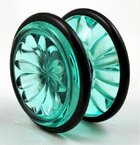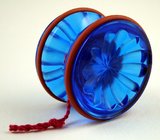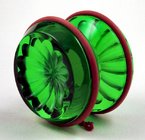Good day,
I was hoping to get some input on the best woods to use for ornamental turning. From what I understand a lot of hardwoods that work great for standard turning aren't suitable for use on a rose engine, the woods need to be very hard to take a clean cut.
I see a lot of African blackwood,
cocobolo/rosewoods as well as fruit tree woods being used on higher end pieces. I look forward to using these woods once I'm more confident in the use a rose engine.
Until then are there any more common and less expensive hardwoods one can use for practice pieces? Most of the work I have in mind is one the small side, a maximum of 4" diameter and 6" in length. I was hoping there might be a domestic hardwood that
cuts somewhat cleanly without tearing, something one could test patterns with a lot of fine detail on. If there aren't any suitable domestic woods are there any abundant species that don't come from the rainforests?
I'm going to start collecting a variety of woods while I'm in the design and build phase of my rose engine. I'd really appreciate any guidance you can give to help steer me in the right direction.
Thank you,
Jeff
I was hoping to get some input on the best woods to use for ornamental turning. From what I understand a lot of hardwoods that work great for standard turning aren't suitable for use on a rose engine, the woods need to be very hard to take a clean cut.
I see a lot of African blackwood,
cocobolo/rosewoods as well as fruit tree woods being used on higher end pieces. I look forward to using these woods once I'm more confident in the use a rose engine.
Until then are there any more common and less expensive hardwoods one can use for practice pieces? Most of the work I have in mind is one the small side, a maximum of 4" diameter and 6" in length. I was hoping there might be a domestic hardwood that
cuts somewhat cleanly without tearing, something one could test patterns with a lot of fine detail on. If there aren't any suitable domestic woods are there any abundant species that don't come from the rainforests?
I'm going to start collecting a variety of woods while I'm in the design and build phase of my rose engine. I'd really appreciate any guidance you can give to help steer me in the right direction.
Thank you,
Jeff






